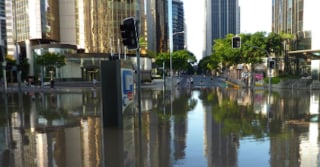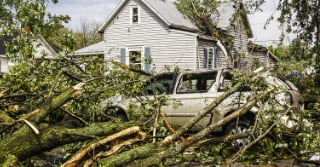Floods have many causes, and the main cause can change depending on where you are located. The most common causes of commercial flooding are:
- Storm surges, including hurricanes.
- Flash flooding caused by intense periods of rainfall
- Mudslides (which are different than landslides)
- When the surface snow melts but the ground is still frozen it is unable to absorb the excess water which then flows into surrounding areas.
- New Construction/Ground Paving. Both alter the permeability of the area and can cause excess water to flow into surrounding areas.
A commercial property policy will not cover damages caused by a flood. A separate flood policy is needed to cover any damages resulting from a flood.
Remember, a flood is a general and temporary condition where normally dry land is:
- Overflowed by inland or tidal waters (flooding of rivers, lakes, coastal waters, etc.); or
- Unusual and rapid accumulation or runoff of surface waters from any source (unusually heavy rain or snowmelt); or
- Mudslides (liquid and flowing mud)
Simply put, flood insurance covers damages caused by any water that first touched the normally dry ground before causing damage to your building or property.
How is my premium determined?
There are a number of factors that help determine your flood insurance premiums.
- Is your property in a Moderate to Low Risk (zones B, C, and X) or a High Risk (A and V) zone?
- If your property is in a high risk zone and you have a mortgage, your lender will require you to have flood insurance.
- What is your building’s age, height, and occupancy?
- What is your company’s location within the building?
- What is the elevation of the lowest floor in relation to the elevation requirement of the flood map (only applicable to newer buildings)?
- What limits of liability you want for the building and its contents?
- And what deductible you choose.
If I am in a low risk area, why should I get flood insurance?
If you are in a low risk area you may think you don’t need flood insurance – and hopefully for you that is true. However, low risk does not mean no risk. From 2014 to 2018 40% of all NFIP flood insurance claims were filed by policyholders outside the high-risk flood areas.
If you would like to learn more about flood insurance for your commercial or residential property, please contact one of our agents. We are happy to answer your questions and come up with an insurance solution to match your needs.





